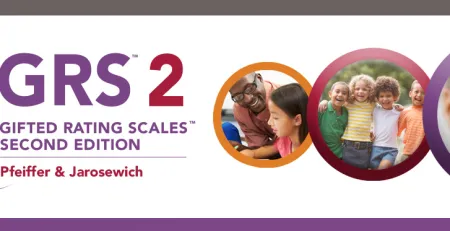ADHD Transitions: Navigating from Adolescence into Early Adulthood
Every developmental stage carries unique pitfalls and triumphs, and the progression from teenager to young adult is no different. The complexity of this transition is exponentially increased for youth with ADHD as they are confronted with new academic, relationship, and life skill challenges in the context of reduced structure and support. Well-informed therapists, school psychologists, clinical psychologists, and psychiatrists have an opportunity to make a meaningful difference for these youth and their communities.
Let’s take a closer look at some of the shifts that occur for ADHD across the transition from adolescence into early adulthood, including diagnostic, presentation, opportunities, and challenges.
Diagnostic shifts
From a diagnostic perspective, DSM-5-TR guidelines change at age 171.
- Instead of requiring at least six symptoms of Inattention, or at least six symptoms of Hyperactivity and Impulsivity, older adolescents and adults only need five symptoms in a category. The old requirement of six or more symptoms within a category excluded some adolescents and adults from diagnosis and intervention, even though they had significant impairment.
- The DSM-5-TR provides key examples of how symptomatic criteria may present in older adolescents and adults, such as being easily distracted by unrelated thoughts or shifting from physically running around to subjective feelings of restlessness. Observable symptoms can change for a variety of reasons, including developmental maturation and intentional use of strategies (e.g., hyperactivity in children that evolves into restlessness in adulthood). Symptoms may shift from an external demonstration into an internalized experience. The DSM-5-TR examples are helpful reminders that symptom presentation can change across the lifespan.
- In terms of age of onset, the DSM-IV specified evidence of impairment before the age of 7 years, and the DSM-5-TR indicates symptoms present before the age of 12 years; note the change not only in age but also in reducing the threshold for evidence. The age-of-onset change is particularly relevant when relying on adult self-report, as people can more reliably recall early middle school as opposed to early elementary school. Furthermore, evidence of impairment before age 7 was often hard to document, as factors like high intelligence and environmental structure can easily mask early childhood deficits (especially among individuals with predominantly inattentive presentation).
Embracing opportunities and managing challenges
These diagnostic changes reflect increased awareness that the original criteria designed for detecting ADHD in children were not adequate at capturing presentation in older adolescents and adults. Once teenagers reach adulthood, they begin having more opportunities, including options to find good-fit niches that allow them to optimize their areas of strength and dodge areas of weakness in education, employment, and relationships. What does this look like for the three main ADHD clusters?
- While some individuals maintain overt symptoms of hyperactivity in adulthood, it is more common for those obvious symptoms to be experienced as internal restlessness when required to be stationary, with a strong drive to seek physical activity once the event ends. Some adults find employment that allows or encourages movement (e.g., park ranger, furniture mover, Physical Education teacher), niches that are not offered to most students. Rather than frustrating parents with a seeming inability to relax, adults can choose partners who are also high-energy.
- Physical impulsivity is less common in adults, but there is often a sense of general impatience accompanied by verbal, cognitive, and emotional impulsivity (e.g., jumping into conversations, committing before reflecting, and having big reactions that blow over quickly). Real-world settings that allow short bursts of effort and frequent changes in tasks can accommodate these symptoms more effectively than a traditional classroom, where students are expected to manage these impulses for extended periods (up to 90 minutes per class in some American middle and high schools). In certain contexts, such as creative roles that prize innovation and brainstorming, outside-the-box thinking and intuitive leaps are desirable.
- The core symptoms of inattention are not typically seen as changing across the lifespan, at least not as much as hyperactivity and impulsivity. However, inattentive features can be managed through the use of strategies and environmental structure. For example, a college student might intentionally choose an interactive, hands-on course that meets for an hour (rather than three hours of dry lecture in-person) or an online course that gives power to the student to pause and take breaks as needed, or a person with a full-time job might hire an executive assistant or other staff (e.g., house cleaners) to help support the administrative tasks often overlooked due to difficulties with inattention. (It’s no accident that the responsibilities of a good executive assistant overlap with key cognitive executive functions like paying close attention to details, taking notes in meetings, flagging items for follow-up, organizing files, managing appointments, keeping up with important items, screening interruptions, providing reminders, and tending to monotonous tasks.)
While the transition into adulthood may offer more opportunities, it also carries high-stakes consequences. For example, behavioral concerns handled by the principal in middle school may be handled by law enforcement for adolescents and young adults. Adults with ADHD have elevated risks (when compared with the general population), such as financial difficulties, divorce, educational underachievement, under-employment, unsafe driving, anxiety, mood disorder, self-injury (including suicide), sexual impulsivity, injuries, sleep disruption, and health concerns2. Among unmedicated adults with ADHD, there are elevated rates of substance use disorders. For example, data from the normative sample of the Conners Adult ADHD Rating Scales 2nd Edition (CAARS™ 2), only 4.8% of adults in the general population (non-clinical cases) endorsed items about frequently taking risks when driving. In contrast, these items were endorsed by 26.0% of individuals diagnosed with ADHD Inattentive presentation and 34.9% of individuals diagnosed with ADHD Combined presentation. Nearly 24% of individuals with ADHD Combined presentation diagnoses said they engaged in risky sexual behavior often or very often, whereas only 3.8% of the non-clinical general population reported that same frequency for risky sexual behaviors.
Further compounding the complications of growing up with ADHD, entering adulthood often translates into reduced structure and increased expectations. Individuals who functioned well enough in high school with the support of parents/teachers can struggle when given greater freedom in settings like college. Bright students who earned high grades in high school without studying may find themselves failing courses in university. The transition into early adulthood can be the “perfect storm” for people with ADHD; just as structure and support are decreased, access to temptation increases. As young adults move from home into dorms or community living, their parent interactions often decrease meaning that difficulties compound further before concerns are evident. Common scenarios include discovering academic probation for first-year college students or being fired from first jobs after allowing things to slide (i.e., proceed without supervision) for too long.
Enabling better outcomes for young adults with ADHD
Despite these challenges, professionals have the potential to make a meaningful difference through diagnosis and intervention as adolescents with ADHD enter early adulthood. Being knowledgeable about age-related changes in diagnostic guidelines and presentations allows us to more accurately diagnose and support adolescents and young adults. Scientifically validated and standardized tools like the Conners 4th Edition (Conners 4®), the Conners Comprehensive Behavior Rating Scales™ (Conners CBRS®), and the Conners Adult ADHD Rating Scales 2nd Edition (CAARS™ 2) provide age-referenced data to help us recognize when symptoms are excessive for an age group. Information from our evaluations can increase self-awareness of personal strengths and challenges.
Through collaboration, we can be strategic about identifying good-fit settings for adolescents and young adults with ADHD that include appropriate accommodations, supports, and structures. Impairment items on the CAARS 2 can flag areas of impairment to be addressed in treatment planning. We can use our professional radar detectors to help people anticipate speed-traps in their lives and guide development of proactive planning skills to make adjustments before a crisis happens. We can support them in strengthening their resilience and coping skills to reduce the negative impact of co-occurring anxiety/depression and to decrease the likelihood of reliance on substances. We can connect these adolescents and young adults with available resources, like medication referrals, counselors, job coaches, study skills tutors, and support groups.
Have questions about how MHS can help with identifying ADHD and tracking progress in intervention during the transition from adolescence to young adulthood? Get in touch with a member of our team.
References
1 American Psychiatric Association. (2022). Diagnostic and statistical manual of mental disorders (5th edition, text revision). https://doi.org/10.1176/appi.books.9780890425787
2 Erhardt, D., Sparrow, E. P., & MHS Staff. (2022). Chapter 2: Background. Conners Adult ADHD Rating Scales 2nd Edition (technical manual). Multi-Health Systems, Inc.










